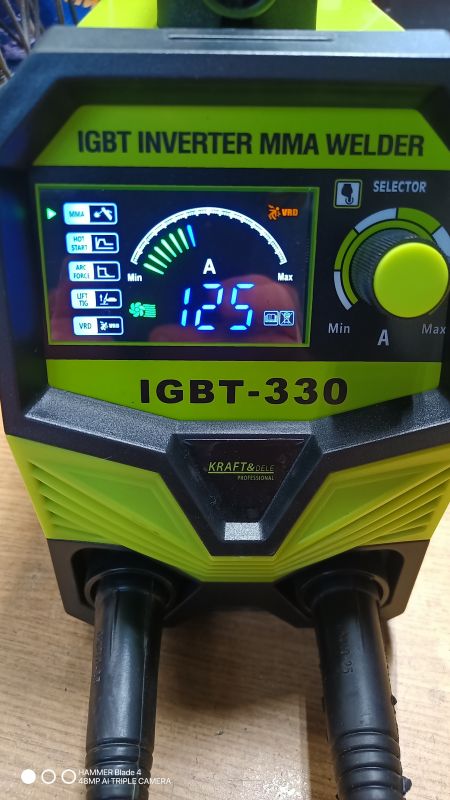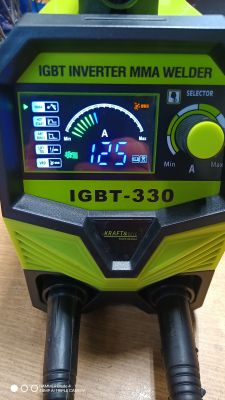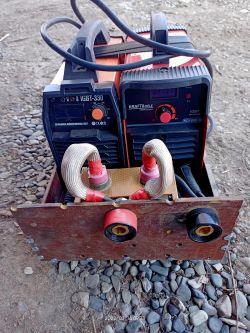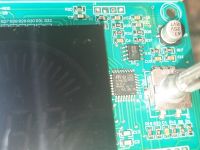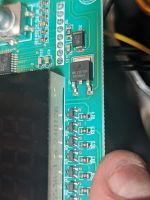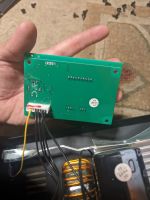Hello.
A few days ago a colleague sent me a link to a well-known auction site leading to a welding machine for less than £90. I don't think anyone with a bit of technical imagination could be so naive as to believe in the miraculous performance of the device. However, I decided to sacrifice the equivalent of 5 packets of cigarettes and buy this marvel marked KD1879.
.
The inscription IGBT-330 and the parameter declaration in the manual suggest that this is the maximum welding current at 60% cycle. I don't know if measuring with digital clamps would be reliable with such distorted waveforms, so I let it go for a while and focused on the purely functional qualities. First, of course, I took a closer look at the device.

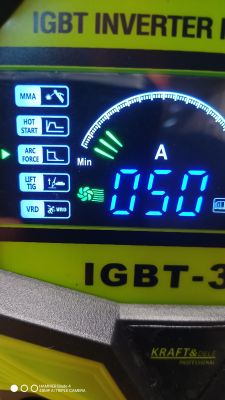

The display is very easy to read and changing parameters via the push-button encoder is convenient. I then turned my attention to the leads, pleasantly soft and long enough. The electrode terminal holds firmly, as does the ground terminal.

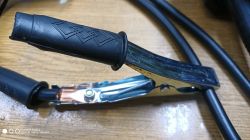
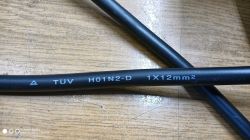
 .
.
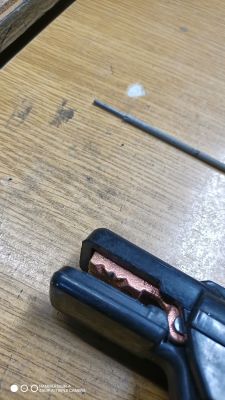 .
.
The wires have a wicked cross-section, but they are copper. In my opinion, for this type of device the absolute minimum is 16 mm² on the secondary side and 3x2.5 mm² on the primary.
Inside the welder you will find nothing interesting. Here, copper has already been abandoned in favour of aluminium both for the current leads and for the choke.
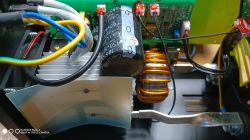
 .
.
I am absolutely not a welder, no one has taught me to weld in my life, I've sloughed off maybe 2kg of electrodes, so I don't feel competent to comment on the end result. To the question of whether it works? Yes, it welds somehow.
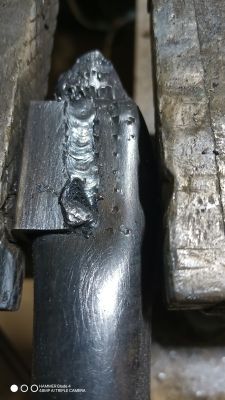 .
.
Finally, impressions:
1. I have to set a higher current than in the old Dedra 160A to get the same melt with the same electrode. I will do this weld on the photo (2.5 mm electrode) with the Dedra at a setting of 70-80 A, here I had to set 125 A, which makes me think that we are dealing with "Chinese amps".
2 Either the non-contact arc ignition doesn't work, or I don't know enough. This is the first welder with this feature I've got to, so maybe I'm doing something wrong.
3. the welder is extremely handy, lightweight, and so if it doesn't fail too quickly I'll be happy to take it on away jobs for those reasons. Of course, we're talking about simple jobs (on fences, gates and other lightweight structures) that I can handle myself without calling in a professional.
A few days ago a colleague sent me a link to a well-known auction site leading to a welding machine for less than £90. I don't think anyone with a bit of technical imagination could be so naive as to believe in the miraculous performance of the device. However, I decided to sacrifice the equivalent of 5 packets of cigarettes and buy this marvel marked KD1879.
.
The inscription IGBT-330 and the parameter declaration in the manual suggest that this is the maximum welding current at 60% cycle. I don't know if measuring with digital clamps would be reliable with such distorted waveforms, so I let it go for a while and focused on the purely functional qualities. First, of course, I took a closer look at the device.



The display is very easy to read and changing parameters via the push-button encoder is convenient. I then turned my attention to the leads, pleasantly soft and long enough. The electrode terminal holds firmly, as does the ground terminal.



 .
. .
.The wires have a wicked cross-section, but they are copper. In my opinion, for this type of device the absolute minimum is 16 mm² on the secondary side and 3x2.5 mm² on the primary.
Inside the welder you will find nothing interesting. Here, copper has already been abandoned in favour of aluminium both for the current leads and for the choke.

 .
.I am absolutely not a welder, no one has taught me to weld in my life, I've sloughed off maybe 2kg of electrodes, so I don't feel competent to comment on the end result. To the question of whether it works? Yes, it welds somehow.
 .
.Finally, impressions:
1. I have to set a higher current than in the old Dedra 160A to get the same melt with the same electrode. I will do this weld on the photo (2.5 mm electrode) with the Dedra at a setting of 70-80 A, here I had to set 125 A, which makes me think that we are dealing with "Chinese amps".
2 Either the non-contact arc ignition doesn't work, or I don't know enough. This is the first welder with this feature I've got to, so maybe I'm doing something wrong.
3. the welder is extremely handy, lightweight, and so if it doesn't fail too quickly I'll be happy to take it on away jobs for those reasons. Of course, we're talking about simple jobs (on fences, gates and other lightweight structures) that I can handle myself without calling in a professional.
Cool? Ranking DIY







